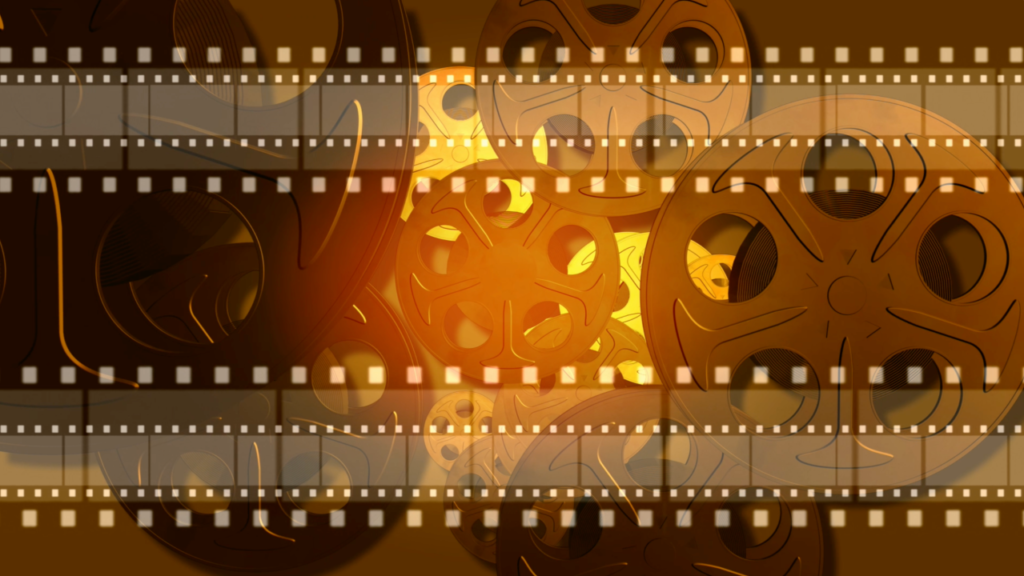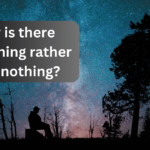The triple-rimmed (past-present-future) wheel of time repeatedly enforces its unsurmountable command on our existence and the experience of the world, what we call reality. Thoughtful beings have always grappled with the nature of consciousness and its relationship to reality. Does consciousness merely witness a pre-existing universe, or does the very act of observation shape reality? This question has sparked extraordinary deliberations from ancient Eastern philosophies to the present scientific era. In this exploration, we will dive into the profound interplay between consciousness and reality, examining whether we are passive observers or active creators in the unfolding cosmos.
While my experience of the world is limited in several perspectives, I believe comments and reflections of my learned readers can help us appreciate the discussion better. So, please feel free to leave your constructive comments and reflections.

Imagine the iconic moment from The Matrix, where Neo, standing in the middle of a hallway, raises his hand and effortlessly halts a swarm of bullets hurtling toward him. In this suspended moment, we find a profound metaphor for the nature of reality and our role in it. As per the movie, ordinary people plugged into the Matrix have completely identified their existence in the simulated reality. Our perception of reality is very close to those plugged into the Matrix.
Before his awakening, Neo lived within the confines of the Matrix, accepting its version of reality without question. He was like any of us, observing and reacting to the world around him. However, as he realizes that the Matrix is a mental construct, Neo learns to manipulate the very fabric of this simulated reality without being implicated in it.
Now, let’s discuss some Western philosophical ideas about the question at hand before delving into the Eastern perspective. The nature of the material world as conceived in the Vedic canon differs in some aspects from the idea of simulated reality. However, we will not go into those finer nuances here.
A. Western philosophical perspective:
- Plato’s Idealism: Plato argued that the world we perceive is just a shadow of the true reality, which exists in the form of perfect, abstract “forms.” Consciousness, in this view, observes and grasps these higher truths but does not create them.
- Descartes’ Dualism: René Descartes distinguished between the mind and the material world. For him, consciousness (the mind) interprets the material world, which exists independently. While Descartes recognized the power of thought, he did not suggest that reality itself is shaped by our consciousness.
- Empiricism (Locke and Hume): John Locke and David Hume saw the mind as largely passive, shaped by sensory experiences. Reality, according to them, exists independently, and our consciousness merely observes and processes the data given by our senses.
- Kant’s Transcendental Idealism: Immanuel Kant offered a middle ground, arguing that while reality (the “noumenal world”) exists independently, our perception of it is shaped by the structures of the mind. For Kant, consciousness actively constructs our experience of reality, but not reality itself.
- Modern Physics and Quantum Mechanics: Quantum theory brought new insights, suggesting that the act of observation might influence physical reality. In the Copenhagen interpretation, the behaviour of particles is determined only when observed, implying that consciousness plays a role in shaping reality at the quantum level. John Wheeler’s “participatory universe” theory further suggests that observers are fundamental in bringing the universe into being.
Thus, while traditional Western philosophy has leaned toward the view that consciousness passively observes an independent reality, modern physics opens up the possibility that reality might be shaped by observation itself, blending passive observation with active participation.
B. Modern Developments:
In philosophy, the ideas keep circulating, sometimes losing their significance and other times coming into the mainstream by some pioneer. In recent years, I would like to cite the works of Bernardo Kastrup, Donald Hoffman, and Anil Seth. However, there are many other prominent figures, and as a philosopher, everyone has something to say about this fundamental question.
- Bernardo Kastrup is known for his Analytic Idealism, which holds that consciousness, not matter, is the fundamental fabric of reality. He argues that the material world—including our bodies and brains—manifests within a universal consciousness rather than an independent, external entity. According to Kastrup, individual consciousnesses are dissociated parts of this larger Mind at Large, like whirlpools within a single stream. In his works, such as “Why Materialism is Baloney” and “The Idea of the World”, Kastrup critiques materialist views that posit consciousness as a byproduct of brain activity. Instead, he claims that the physical world is a “mental” construct shaped by consciousness. Kastrup’s ideas challenge the conventional scientific narrative, proposing that reality as we perceive it is essentially mental and dependent on the workings of a unified consciousness.
- Donald Hoffman offers a radically different perspective with his Interface Theory of Perception, which argues that our perception does not reveal the true nature of reality. Instead, what we perceive is like a user interface designed by evolution to help us survive rather than to show us reality as it is. Hoffman likens this to icons on a computer desktop, which are useful but bear no resemblance to the complex inner workings of the computer itself. In his book “The Case Against Reality”, Hoffman builds on this idea, arguing that the physical world we perceive is merely a simplified interface that hides the underlying complexity of reality. He introduces the concept of Conscious Realism, which posits that consciousness is fundamental and the structures we perceive in the world arise out of interactions between conscious agents. Hoffman’s work suggests that our evolutionary adaptations prioritize survival over accuracy, meaning that we are effectively blind to the true nature of reality, and what we see is merely a functional representation.
- Anil Seth takes a neuroscientific approach to consciousness, focusing on how the brain constructs our experience of reality through predictive processing. Seth believes perception is not a passive reception of external stimuli but an active process where the brain makes predictions based on prior knowledge and sensory input. In his book “Being You: A New Science of Consciousness” and his famous TED Talk “Your Brain Hallucinates Your Conscious Reality”, Seth explains how the brain continually generates hypotheses about the world, adjusting them as sensory data comes in. This process results in what Seth calls a “controlled hallucination”, where our experience of reality is our brain’s best guess of what’s out there. While Seth acknowledges that there is an objective world, he emphasizes that what we perceive is shaped by the brain’s interpretations, highlighting the active role of consciousness in constructing reality.
C. Reflections from Ancient Wisdom of India:
The ancient wisdom of India has pondered over the question with much rigour, culminating in several schools of Vedanta. It is not possible to do justice here. However, I prefer to reflect on some intriguing passages from Srimad Bhagavatam, the crest jewel of the vast Vedic canon.
- The Observer (Witness) Perspective: Just like an observer who observes a tree growing and dying, which remains distinct from the tree, we are separate from the reality we trade between birth and death (SB 11.22.50). It suggests that pure consciousness is like an observer, separate from the material world and witnessing its fluctuations without being truly part of it.
- The Delusion of the Material World: When we fail to distinguish ourselves from material nature, we become trapped in the illusion of the physical world (SB 11.22.51, 54, 55). This illusion, also termed Maya, is compared to quivering trees reflected in water or the earth spinning when we spin our eyes, indicating that the material world, though experienced, is not real in the ultimate sense. It suggests that our experience of reality is shaped by illusions and misidentifications. Although our perception is an illusion, the existence of material nature is not. It is also stated that
“Furthermore, this world cannot be permanently real, for it partakes of the natures of not only the absolute reality but also the illusion disguising that reality. Actually, the visible forms of this world are just an imaginary arrangement resorted to by a succession of ignorant persons in order to facilitate their material affairs.” – SB 10.87.36
- Reflection and Reality: The Bhagavatam uses metaphors like the reflection of the sun in a mirror (SB 7.15.58) to convey that the world has an illusory nature but still holds a relative existence. This raises the possibility that while we observe the world, it is not fully false—it is a reflection or projection of a deeper, hidden truth. The illusion holds sway only because of our misidentification with it. Thus, although our identity is independent of the material world, our misidentification with things other than our true self becomes the foundation of the illusion we perceive.
- Active Creators of Perceived Reality: Our mind, which coordinates the senses and shapes our interactions with the world, actively generates the experience of external duality as the basis of our perception (SB 11.22.42). This suggests that the mind, through attachment and ego, actively constructs the framework of reality as we experience it. All this happens because the observer of material happenings identifies with us so implicitly that we term our experience a reality. Factually, the notion of physicality exists in our perceptual space. Thus, all those who possess a similar illusion share a common flawed perception of the world. This is the breeding ground for all ‘-isms’.
- The Bewilderment of Ego and Senses: The Bhagavad Gita (BG 3.27) echoes these ideas by stating that under the illusion of ego, we identify with our actions driven by the three modes of nature (Sattva-Rajas-Tamas), wrongly assuming own self to be the doer. This reinforces the concept that we create a false reality based on identification with bodily and sensory experiences, although, in truth, actions are driven by material nature, not we.
Thus, Vedic texts offer a nuanced view of our relationship with reality. From one perspective, we are observers, detached witnesses of material life, which unfolds like an illusion before us. However, when we misidentify with the material body and ego, we become creators of an illusory reality, shaping and participating in a dreamlike existence that keeps us bound to cycles of birth and death. Thus, we are both observers and participants, depending on our level of self-awareness and spiritual understanding.


